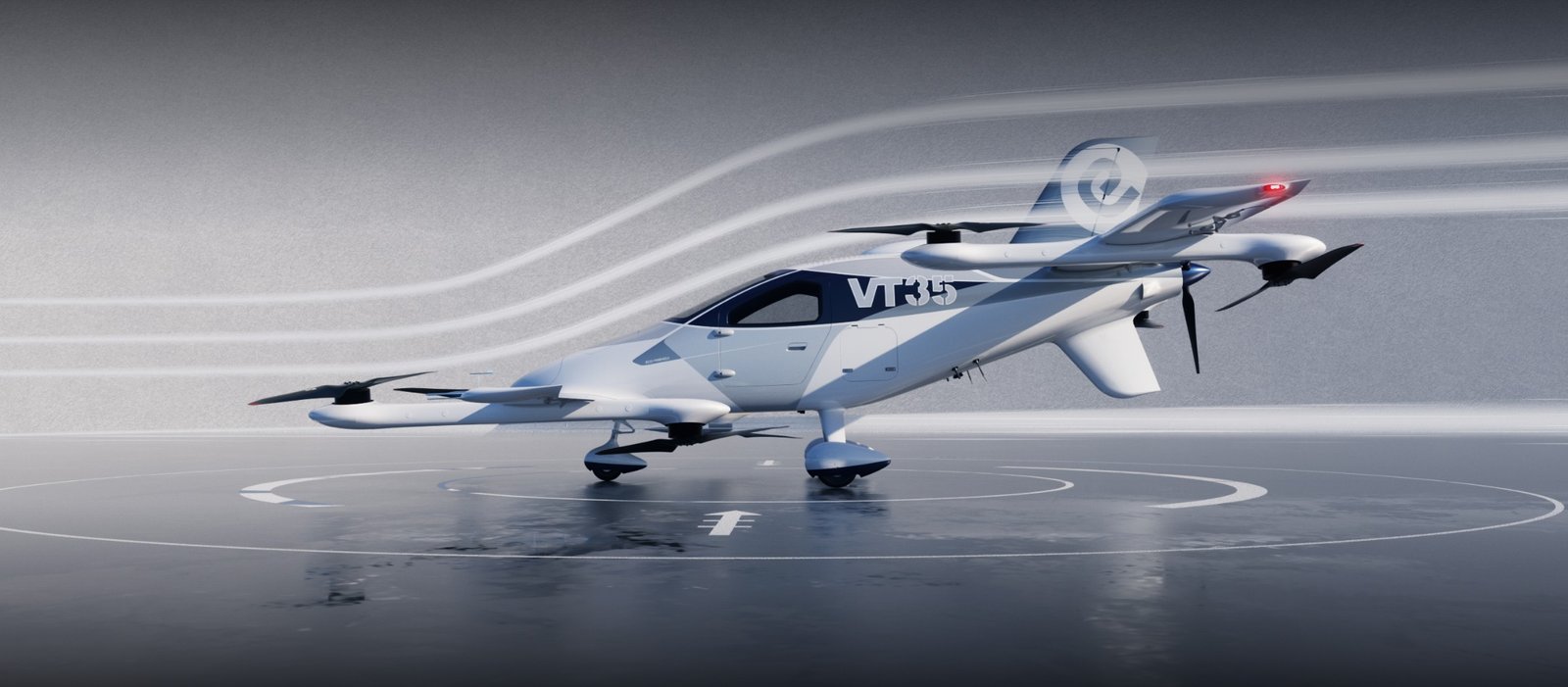Electric aviation is evolving faster than ever — and at the center of this revolution is the Ehang VT-35, a two-seat, battery-powered eVTOL that promises a range of up to 200 km at full load — the highest in its class. But what truly sets the VT-35 apart isn’t just its performance; it’s the tandem-wing configuration, a design once considered niche that’s now gaining serious traction in the world of electric aircraft.
Before diving into the details of the VT-35, it’s worth asking:
Why are tandem wings suddenly making a comeback?
The Rise of Tandem-Wing Electric Aircraft
Over the past few years, a growing number of next-generation aircraft have embraced the tandem or dual-wing layout. From the pioneering Airbus Vahana and Pivotal Helix to Skyfly Axe, AMSL Aero’s Vertiia, and Ascendance Atea, the list of projects adopting this design continues to expand. Even solar and hybrid platforms like SolarXOne and Eraole have utilized tandem wings for endurance and efficiency.
Now, with the arrival of Ehang’s VT-35, another major player joins the growing roster of tandem-wing innovators.
Why Tandem Wings Make Sense for Electric Aircraft
Tandem-wing aircraft offer a unique combination of aerodynamic efficiency, structural simplicity, and operational versatility. Unlike conventional airplanes—where the tailplane generates negative lift to stabilize the aircraft—the tandem layout allows both wings to contribute positively to lift.
Here’s why that matters:
1. Higher Lift-to-Drag Ratio
Because no surface is fighting the main wing, tandem configurations achieve better aerodynamic efficiency, translating to longer range or lower energy consumption — a key advantage for electric aircraft.
2. Lower Wing Loading
With lift distributed between two wings, the stress on each is reduced. This results in shorter takeoff and landing distances, ideal for urban or regional eVTOL operations, while also allowing lighter, more efficient wing structures.
3. Natural Pitch Stability
By carefully tuning the spacing and angles between wings, designers can achieve stable flight without requiring a large tailplane. The result? Lower structural weight and simpler control systems.
4. Gentle Stall Characteristics
If the front wing stalls first, the aircraft naturally lowers its nose and recovers smoothly — an inherent safety feature that improves flight handling for both human and autonomous pilots.
Despite these clear aerodynamic benefits, tandem wings never became mainstream in traditional aviation. So, what changed?
Why Tandem Wings Didn’t Take Off — Until Now
Historically, tandem-wing aircraft struggled with center-of-gravity (CG) sensitivity. Since both wings share the lifting load, the CG had to stay within a narrow range to maintain stability. In conventional planes, a single heavy engine in the nose or tail often made that balance difficult, making tandem-wing designs impractical for mass production.
Electric Propulsion Changed Everything
Electric propulsion fundamentally alters aircraft design. Instead of one heavy engine, multiple lightweight electric motors can be distributed across the airframe, allowing engineers to precisely balance weight and thrust.
For tandem-wing aircraft, this means:
- Motors can be mounted on both wings, eliminating CG limitations.
- Distributed propulsion improves stability and redundancy.
- Precise thrust control enhances pitch and transition management.
In short, what was once a limitation is now an advantage. The synergy between tandem aerodynamics and distributed electric propulsion has unlocked a new era of efficient, compact, and inherently stable aircraft.
The Ehang VT-35: A New Chapter in Electric Aviation
China-based Ehang has long been a pioneer in autonomous electric flight. From the Ehang 184 (2015) to the record-breaking Ehang 216-S, the company has consistently pushed the boundaries of what’s possible in eVTOL technology.
After the transitional VT-30, Ehang’s latest design, the VT-35, represents the next step forward. This two-seat tandem-wing eVTOL uses a lift-plus-cruise configuration — one of the first of its kind among tandem-wing aircraft.
Key features include:
- Eight lift rotors for vertical flight
- A single rear pusher propeller for forward thrust
- 8.16-meter wingspan (nearly double that of the Pivotal Helix)
- Fully autonomous operation, optimized for regional mobility
Ehang has also tested solid-state batteries with an impressive 480 Wh/kg energy density, achieving over 48 minutes of flight in prior models — a promising indicator for the VT-35’s potential.
The aircraft has already demonstrated successful transition flight, marking a critical milestone toward commercialization.
Conclusion: The Future Takes Flight
The Ehang VT-35 embodies the perfect marriage of aerodynamic innovation and electric propulsion. Tandem-wing designs, once held back by engineering constraints, are finally free to realize their potential in the electric age.
As more companies adopt distributed propulsion and lightweight composite materials, the tandem-wing eVTOL may soon become a defining symbol of sustainable aviation’s next chapter.
Ehang’s VT-35 isn’t just another prototype — it’s a glimpse into the future of efficient, autonomous electric flight.
